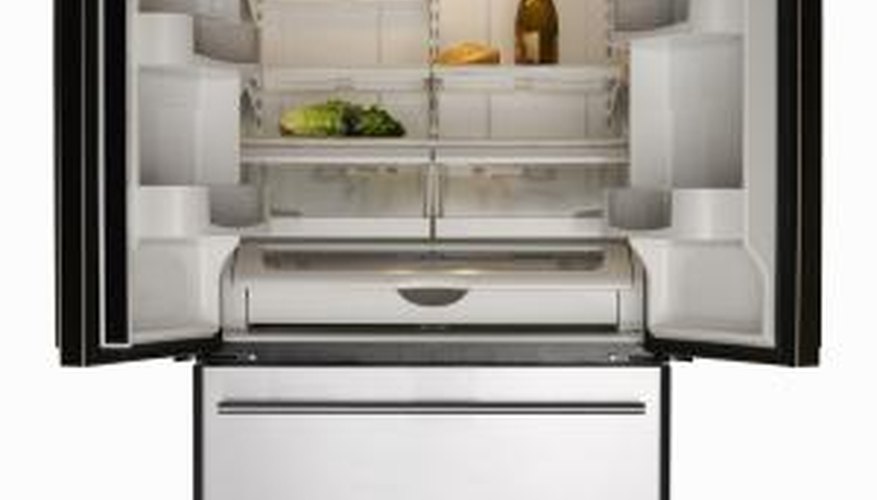You likely know that your refrigerator is a big energy user in your home. However, if you live in a part of the country that is prone to hurricanes, understanding exactly how many volts of electricity your fridge needs to run may be a necessity. That way, when a storm leaves you without power and needing to use a generator, you know whether you can hook your fridge to run off the generator without risking damage to either.
Voltage Defined
Voltage is not a measurement of energy, as people often assume. Rather, it's a measurement between two points, like length. The voltage required to run an appliance tells you how much total energy is required to move an electrical charge along that line so that the appliance can operate. Thus, a fridge can't have a certain voltage; however, it requires a specific amount of voltage to run.
- Voltage is not a measurement of energy, as people often assume.
- Thus, a fridge can't have a certain voltage; however, it requires a specific amount of voltage to run.
By the Numbers
Most devices made for use in the U.S. run on 120-volt power supplies. This isn't a measure of how much energy is being used. A standard wall plug in the U.S. provides 120 volts of power. Such power supplies are meant to handle refrigerators, which use, on average, between 57 and 160 watts of electricity when the compressor is not running, and up to 700 watts when it's running at full force.
- Most devices made for use in the U.S. run on 120-volt power supplies.
- Such power supplies are meant to handle refrigerators, which use, on average, between 57 and 160 watts of electricity when the compressor is not running, and up to 700 watts when it's running at full force.
Understanding Energy Usage
Some devices, including refrigerators, don't use the same amount of electricity the entire time they are running. Fridges run on a cycle, with the compressor running some of the time and then shutting off for a period of time. To get an accurate picture of how much energy the unit uses during any extended period, use a wattage somewhere between the lowest point (when the compressor is off) and the highest point (when the is running at full speed).
Getting Specific
To know how much electricity your specific refrigerator uses, you can hook up a watt-hour meter to it or you can simply look at the energy usage label on your fridge, usually located in a discrete back or side corner of the unit. If only the amperage is provided, multiply that number by 120 (the voltage) to find out the wattage. The label should also tell you whether the unit is meant to operate on 120-volt power outlets.
